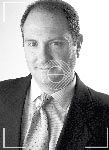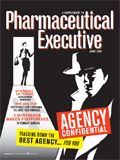Mr. Big
OK, a parent company is a holding company that owns enough voting stock in another firm to control management and operations by influencing or electing its board of directors. In other words, it maximizes shareholder value. Still, what does it mean for an agency and, in turn, a client to be under a big top? To find out AGENCY CONFIDENTIAL brazenly elbowed its way into the executive offices of two men who should know: Nick Colucci, recently named president and CEO of Publicis Healthcare Communications Group, one of the largest healthcare groups in the world; and Scott Cotherman, CEO of Corbett Accel Healthcare Group, a parent company for eight business units and a member of the Omnicom Group.
DIRECTIVE:
What is the role of a parent company? What does it mean for a prospective client who, more often than not, is looking to buy business at an agency level? What do these huge companies offer? And is bigger really better?
FINDINGS:
OK, a parent company is a holding company that owns enough voting stock in another firm to control management and operations by influencing or electing its board of directors. In other words, it maximizes shareholder value. Still, what does it mean for an agency and, in turn, a client to be under a big top? To find out AGENCY CONFIDENTIAL brazenly elbowed its way into the executive offices of two men who should know: Nick Colucci, recently named president and CEO of Publicis Healthcare Communications Group, one of the largest healthcare groups in the world; and Scott Cotherman, CEO of Corbett Accel Healthcare Group, a parent company for eight business units and a member of the Omnicom Group.
In May, Nick Colucci was appointed President and CEO of Publicis Healthcare Communications Group, replacing Ed Rady, his mentor and colleague for the past 11 years. It is being called one of the smoothest transitions in advertising history. Colucci, 47, was named Rady's successor in 2004, when he was promoted to the position of COO. Since then, he gradually assumed all the responsibilities that go with the CEO's job. And, voilà, now he's at the top. Publicis Healthcare is an integrated division of Publicis Groupe, the fourth-largest communication group in the world. And while the Publicis Groupe is French in origin, there's nothing remotely French about Colucci, who speaks with a distinct New York accent. A graduate of the University of Rochester, Colucci earned a BS in neuroscience and later went on to receive an MBA from Loyola College of Maryland. He lives with his wife, Ellie, and their three children in Westfield, NJ.
In the same week Colucci was named president, he took the time out to talk to AGENCY CONFIDENTIAL about his and his company's role in the industry's changing landscape. Colucci is generous, engaging, insightful, and completely unpretentious. He is also devoted to the industry.

Nick Colucci
"I'm one of those rare kind of guys who's been in the business my whole life," says Colucci. "After college, I went to work at Hoffman-La Roche here in the States in a variety of different positions, from sales to marketing. Then I went to a small start-up business in healthcare in the diagnostics area."
WHY HE'S MR. BIG
We're a network that really works together as a group. We have a diverse group of companies within the network. Virtually all of the healthcare assets, the vast majority, within the entire Publicis group report up through one person, and that's me.
A parent with a vision
We share access; we share key relationships across many of the companies with all of the different brands and businesses. But really, one should look at the Publicis Healthcare Communications Group as leadership. We drive leadership in the organization in terms of creating a vision for the group and the broad strategies of how we're going to get there, the principles, and the values.
In one is many
We create an environment for all of the individual brands to thrive in. So Saatchi & Saatchi Healthcare thrives with its own corporate culture. It may live within the vision of the group and within the values of the group. But then it drives its own culture through that: its own image, its own branding within the worldwide organization or the world at large. Medicus does the same. Publicis Selling Solutions does the same. Our medical education practices do the same. And so on. We also have a group called Glow Worm. That's an interactive digital business that's within the Healthcare Group. And we have a business called iMed Studios. It does 3-D animation and tablet PC work. And that's within our group.

Nick Colucci
The brand comes first
What makes us unique is we create an environment for each of the people focusing on our clients' businesses to be rather media-neutral in what they suggest will be best for the brands. So if a brand needs medical education and a little bit of consumer work and some professional promotion, then we have open access to that. We create incentives for people at the top of the organization to be neutral in what they suggest. They should suggest only what's best for our clients' businesses.
Each of the business units has its own financial structure. That's how we're able to deal with conflicts and so on. However, the people running each of those offices are personally incentivized to look at it rather neutrally. That is, their bonuses come from how well not only their business unit does, but how well the whole healthcare group does and, to a certain degree, how well the whole Publicis Group does.
A larger purpose
We have a common vision of wanting to be the destination. We want to be the destination for clients and for employees, and for personnel who want to focus their life in making a difference in healthcare communications. That's kind of the broad vision of our group. And then we have what we're calling our core values. And those core values really focus around collaboration, communication, and learning. We use the word 'learning' rather than 'creative,' although we have a creative mantra. We think if you have a constantly inquisitive mind you'll be creative. And then there is integrity.
Those are the common values or principles we drive through each and every business unit. From there they then take their corporate culture and have it flourish in its own area of expertise. Glow Worm focuses on that interactive CRM two-way dialog medium; whereas Medicus is focused on professional promotion. And Saatchi Consumer Healthcare is focused on DTC or DTP, those businesses.
Two shops in every port
We have offices in 10 countries around the world, the major countries that you would think of. We actually have two shops, two networks in those key markets around the world. In all the key markets around the world, Italy, France, Spain, Germany, Japan, Australia, we have a Medicus office and a Saatchi office, separately managed. And we have medical education practice in the name of Discovery in each of those countries also.
Avoiding railroad's fate
In terms of a broad vision, we understand that advertising, as it's narrowly defined, does not in essence represent, probably even today, everything that we do, or needs to be done and certainly won't in the future. Interaction and communication in healthcare is where we want to be. We want to be where professionals and consumers, patients and caregivers are interacting in a healthcare venue. I don't want to create too much of a dramatic point, but 100 years ago, the number-one industry in this country—or, actually, in the world—was the railroads. Well, we know where they are today and that's because they only thought of themselves as a railroad business, not a transportation business. We don't want to end up that way. We want to think about where this business is all going.
Ramped up for digital
In addition to the strategic creative content that we are a big part of, we see involvement in the emerging channels of communication, be it digital or interactive, as a place where we need to be. That's where we're making a lot of our investment internally. Getting our people ramped up to be able to create in the digital environment, on that canvas, as well as on paper and in television and radio. And we see acquisitions in that area will come from the Publicis Group, like Digitas, and even from within our own Healthcare Group. So we're pushing in that direction.
Sights on distant shores
We and the healthcare community are being more broadly accepted in the world at large. We're moving into places that we haven't been in the past or hadn't been very important, like Eastern Europe or, more specifically, China, where we just bought a new company. And so we're moving into markets where interaction and communication about healthcare is a relatively new thing. Where, we think, it is going to be exploding and emerging. We're going to look at India and South America as an opportunity for us to expand geographically. And then we're looking at new channels of distribution and new channels for the creation of those messages.
Trust is communicating
When you think about the word 'trust' and what it takes to get there, I go back to how I've built trust within my own organization or within my family. Trust is all about communicating with people, letting them know what you're all about, and having integrity, saying what you mean and meaning what you say.
Opting in
One of the greatest things that the digital environment gives us is the ability for interested parties to opt in (and I think our regulatory environment, particularly in the States, is going to have to learn how to deal with that). In other words, if somebody asks the question and opts in, purposefully wanting to engage in a conversation, then it's really our responsibility and the industry's responsibility to provide that information. And opt-in marketing is probably going to be a big part of the future. People are going to tell us when, how, why, and what they want to communicate about.
I think the future will be centered a lot more around new levels of content and new communities created over the Web where people will actively participate in conversations—they're doing it now to a certain degree in certain patient areas like in breast cancer and AIDS where there's an active dialog going on with patients and advocacy groups. And I think the industry's got to find a way to be a part of that.
Professional still the hub
The healthcare professional has been, is, and will continue to be a center and a hub by which much of the information will be disseminated about healthcare. The patient is in the middle of that now but doctors are a big part of that partnership with patients.
And so, when we communicate with physicians now, the old marketing 101 stuff would tell you that if you have a complicated message to a select audience, sales promotion is one of the best ways to communicate. And that's how the industry has for many years communicated, and I believe that it will continue to communicate via sales or direct sales.
The electronic avenue
However, the information technology that's available today also allows you to communicate complicated messages to select audiences. So there's a fundamental reason why the sales forces of the past may not be the same. They won't go to zero, which some people talk about. I don't believe that's true. But I do believe that they will be modified in the way that they're used. Technology will kind of fill in and allow us to still deliver these very complex messages that are responsible for us to deliver to these select audiences but in a way that won't need direct sales people to do it. It will happen over the Net or electronically or digitally.
We're exploring lots of ways to do that now. Clients are too. Tablet PCs are just one example. There will be many others out there. E-detailing as well as just regular chats and sites that will be geared just to the healthcare professional.
Just think, Marcus Welby couldn't do that.
PUBLICIS' GLITTER
Anyone remember the spot during the Super Bowl that managed to make heart disease funny? The one with the evil thugs—high blood pressure, diabetes, obesity, and cholesterol—beating up on the guy dressed as a heart. Produced by Glow Worm, the ad was for Altac (King Pharmaceutical) in conjunction with the American Heart Association. Glow Worm is the newest member of the Publicis Healthcare Group. An interactive, digital business, Glow Worm's charming name was inspired by troops in World War I who triumphed by reading maps by the light of glow worms.
The Misinformation Maze: Navigating Public Health in the Digital Age
March 11th 2025Jennifer Butler, chief commercial officer of Pleio, discusses misinformation's threat to public health, where patients are turning for trustworthy health information, the industry's pivot to peer-to-patient strategies to educate patients, and more.
Navigating Distrust: Pharma in the Age of Social Media
February 18th 2025Ian Baer, Founder and CEO of Sooth, discusses how the growing distrust in social media will impact industry marketing strategies and the relationships between pharmaceutical companies and the patients they aim to serve. He also explains dark social, how to combat misinformation, closing the trust gap, and more.
